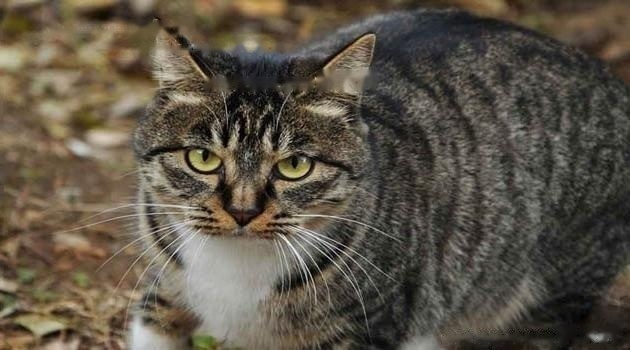The prairie tabby cat is a national second-class protected animal. The prairie tabby cat is also called a wild cat, a desert tabby cat, and a civet cat. This cat is a little bigger than a domestic cat. They like to forage in grasslands or oases. In China, they are mainly distributed in Xinjiang, Gansu, Ningxia and other provinces. In 1988, the Chinese government promulgated the National Key Protected Wildlife List, which classified this species as a second-level key protected animal.

1. Characteristics of prairie tabby cats
The body color of prairie tabby cats is light sandy yellow or sandy gray, and the abdomen is light yellow Gray, bigger than a domestic cat, with a body length of 50cm-70cm, a tail length of 25cm-35cm, and the length of the tail is exactly half of the body length. The prairie tabby cat weighs about 8kg and looks rough. The back is light sandy yellow to light yellowish gray. There are many irregularly shaped brown-black patches and stripes all over the body, brown-black tufts on the tips of the ears, 5-6 black-brown stripes on the tail, and white under the tail.
2. Distribution of prairie tabby cats
The prairie tabby cat has subspecies only in Xinjiang, mainly distributed in Ningxia, Gansu and Xinjiang. There are also many distributions abroad: Africa, Arabia, Iran, Syria, the southwest of the Indian Peninsula, southern Europe and so on. The main grassland tabby cat reserves are: Snow Mountain Spruce, Luoshan, Tomur Peak, Qinghai Lake Bird Island, Wanglang, Wolong, Lop Nur Wild Camel Reserve and so on. From the previous relevant investigations, no one has been seen in the wild, and the number of species is quite small. It is difficult to estimate the existing number. Perhaps the number of the population in the northwest region of China may exceed 10,000. The estimated density is in 10/100 square kilometers. The prairie tabby cat has a great effect on suppressing the rampant rodent damage. In the 1980s, there was a purchase of 1,500 prairie tabby cat furs, but now there are basically no.
3. Living habits of prairie tabby cats
The main habitats of prairie tabby cats are shrubs and shrubs composed of tamarisk, jujube, ephedra, licorice, wild hemp, etc. Sub-shrub deserts, also appear in reed meadows or reeds, prairie swamps, basins and low mountain deep forests below 1000 meters above sea level. Prairie tabby cats are relatively adaptable to the environment, but generally do not enter areas covered with heavy snow, and their activities are basically in arid areas. Prairie tabby cats are solitary at dusk or at night, and hide in tree burrows or bushes during the day. The prairie tabby cat is very hunted and has strong territorial behavior, and the territory occupied by the individual is 0.5 square kilometers.
The breeding season of prairie tabby cats is from January to March, and the female estrus lasts for 2 to 8 days. At this time, the males will surround the females and make some harsh sounds to court. At this time, the males will Groups fight fiercely together. One litter is born every year, each litter has 2-3 cubs, and the gestation period is about 60 days. The cubs are born with a weight of 40 grams, can open their eyes in 10 days, start burrowing activities at 4-5 weeks old, play with females after 3 months, start independent life after 5 months, and mature at 1 year , the average lifespan of a prairie tabby cat is more than 15 years.
4. Prairie tabby breeds
There are three kinds of wild cats in the world
1. African wildcat: This cat is found in the mountains, plains and woods of Africa and Arabia. But not distributed in tropical rain forests. African wild cats in North Africa are also the ancestors of domestic cats.
2. European wild cat: distributed in most parts of Europe except Scandinavia. Mainly in deciduous broad-leaved forest and coniferous forest belt.
3. Asian wild cat: also called Indian wild cat. Distributed in the Middle East, India, Russia and China, the wild cat in China is called the prairie tabby cat. Mainly in drier areas.
These wild cats have certain differences in appearance. African wild cats are lighter in body color than European wild cats. The main colors are gray and brown. Cats near forest areas have a darker body color. There are dark, corrugated markings on the body. European wild cats generally have thicker fur. Compared with domestic cats, their heads are larger. The body color of cats in different regions is also different. Asian wild cats are smaller in size and have brown-gray gray fur. .
![[Dog Training 5] The training method of pet dog dining etiquette](/static/img/12192/12192_1.jpg)




